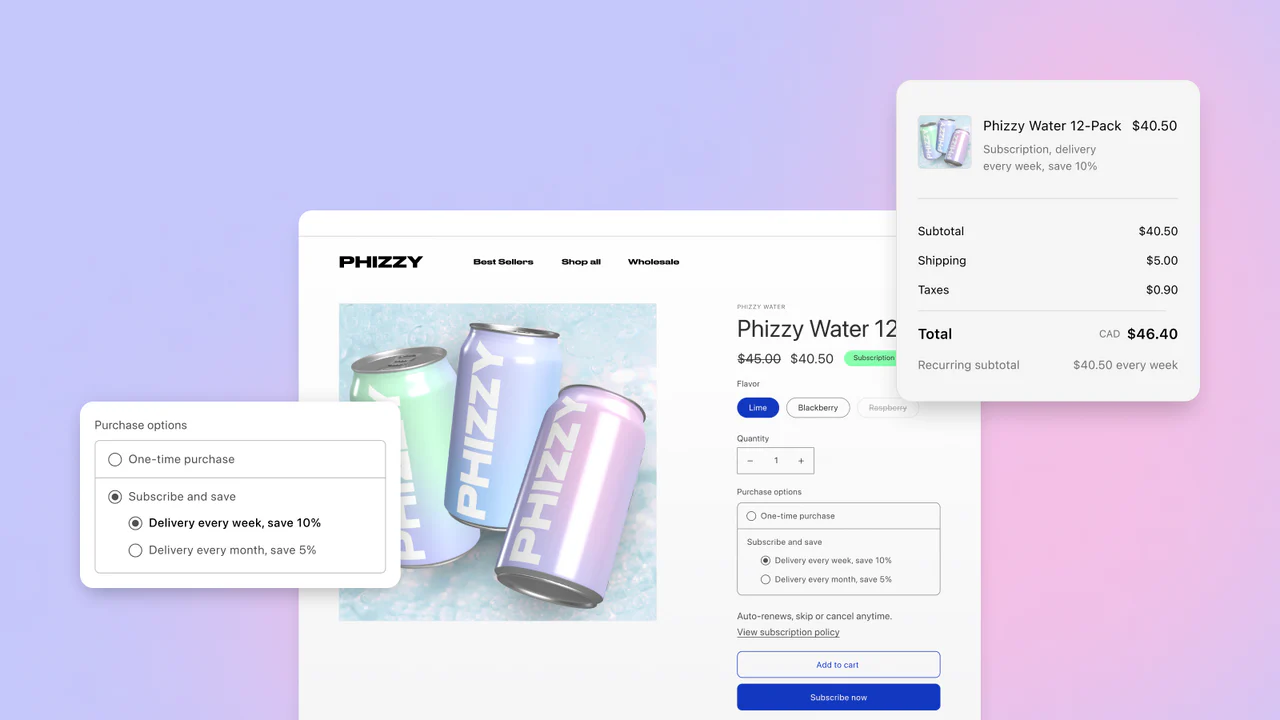
How to build a Shopify store: Step-by-step guide
- Shopify
- E-commerce
Building an online store on Shopify can be an exciting
venture for businesses of all sizes. Whether you’re a small
business owner or an established brand, Shopify offers a
comprehensive platform to create your online presence. In
this guide, we’ll walk you through the essential steps of
Shopify store development, ensuring your website is not only
visually appealing but also optimized for search engines.
Let’s dive into the process of Shopify development with
these straightforward steps:
Step 1: Sign Up for Shopify
1.
Create an Account:
Visit Shopify’s website and sign up for an account.
Choose a pricing plan that suits your business needs.
Shopify offers a 14-day free trial, allowing you to
explore its features before committing.
2.
Set Up Your Store:
After signing up, Shopify will guide you through the
initial setup, where you’ll enter essential details
about your business.
Step 2: Choose a Theme
1.
Select a Theme:
Shopify has a variety of themes tailored to different
industries and aesthetics. Choose one that aligns with
your brand identity.
2.
Customize Your Theme:
Customize your theme by adjusting colors, fonts, and
layouts to match your brand. Shopify’s theme editor is
user-friendly and requires no coding knowledge.

Step 3: Add Products
1.
Create Product Listings:
Add products to your Shopify store. Include high-quality
images, detailed descriptions, prices, and any variants
(like different sizes or colors).
2.
Optimize Product Pages:
Use relevant keywords such as “Shopify store
development” in your product titles and descriptions to
improve SEO.
Step 4: Set Up Payment and Shipping
1.
Configure Payment Gateways:
Shopify supports various payment gateways like PayPal,
Stripe, and credit cards. Choose the options that work
best for your customers.
2.
Define Shipping Rates:
Set up shipping rates and zones depending on where
you’ll be shipping your products. Shopify also offers
integrated shipping solutions that can simplify the
process.
Step 5: Implement SEO Strategies
1.
Keyword Research:
Incorporate relevant keywords like “Shopify development”
throughout your site to help boost your SEO.
2.
Optimize Your Content:
Ensure all your content, from product pages to blogs, is
optimized for both search engines and users. This
includes using meta tags, creating SEO-friendly URLs,
and including alt text for images.
Step 6: Launch Your Store
1.
Review and Test Your Store:
Before going live, thoroughly test your Shopify store.
Check for any errors and ensure the checkout process is
smooth.
2.
Launch Your Store:
Once everything is set, it’s time to launch your store.
Announce your launch through email marketing, social
media, and other channels to generate interest.
Step 7: Market Your Store
1.
Digital Marketing:
Utilize digital marketing strategies like social media
marketing, email campaigns, and PPC advertising to
attract more visitors to your store.
2.
Content Marketing:
Create valuable content that can help in attracting and
retaining customers. For example, blog posts about
“Shopify store development” can drive more targeted
traffic to your site.
Step 8: Analyze and Optimize
1.
Use Analytics:
Shopify provides built-in analytics tools to track your
store’s performance. Regularly review these metrics to
understand customer behavior and identify areas for
improvement.
2.
Continuous Optimization:
SEO and website optimization is an ongoing process. Keep
updating your content, optimizing your site, and staying
up to date with SEO best practices.
Your shopify store is ready!
Conclusion:
Building a website on Shopify involves careful planning and execution, but with the right approach, it can be straightforward. By following these steps and focusing on SEO from the outset, you can set up a Shopify store that not only looks great but also ranks well in search results, driving traffic and sales.FAQ's
-
How many products can you add on Shopify?
On Shopify, you can add an unlimited number of products to your store, regardless of the plan you are on. This feature allows you to scale your business without worrying about hitting product limits, making Shopify an ideal platform for both small and large online retailers.
-
How much does a Shopify store cost?
Shopify offers several pricing plans to accommodate the needs of different businesses:
1. Basic Shopify: Priced at $19 per month when billed annually, this plan is well-suited for solo entrepreneurs starting out.
2. Shopify: At $49 per month, billed annually, this plan is designed for small teams and offers additional features.
3. Advanced Shopify: Available for $299 per month with annual billing, this plan is ideal for businesses that are scaling up and need detailed reports and analytics.
Each plan includes web hosting, SSL certificate, and unlimited products. Additional costs may include themes, apps, and transaction fees if not using Shopify Payments. -
How to change Shopify domain name?
To change your Shopify domain name:
1. From your Shopify admin, go to Settings > Domains.
2. Click Change primary domain.
3. Select the domain you want to set as the primary domain.
4. Click Save .
This will update your store’s primary domain. Remember, if you want a completely new domain, you may need to purchase it either through Shopify or a third-party provider before making this change. -
How to contact Shopify support?
Shopify offers several ways to contact their support team:
1. Live Chat: Access via your Shopify admin dashboard.
2. Email: Fill out a contact form on the Shopify support website.
3. Phone: Available in select regions; phone numbers are provided on the Shopify help center.
4. Community Forums: Where you can ask questions and receive answers from other Shopify users and experts. -
How to find products to sell on Shopify?
To find products to sell on Shopify, consider the following methods:
1. Market Research: Identify trending products and niches through tools like Google Trends or social media platforms.
2. Wholesalers and Manufacturers: Establish relationships with wholesalers and manufacturers to source products.
3. Dropshipping: Use platforms like Oberlo or AliExpress to find products that can be dropshipped directly to your customers.
4. Handmade Goods: Create and sell your own handmade goods if you have a craft or specialty. -
How to dropship with Shopify?
Dropshipping on Shopify can be started by following these steps:
1. Choose a Niche: Select a niche that interests you and has potential market demand.
2. Find a Supplier: Use platforms like Oberlo, AliExpress, or Dropified to find suppliers who can ship products directly to your customers.
3. Set Up Your Store: Use Shopify to create your store, adding products from your chosen supplier.
4. Market Your Store: Promote your store through social media, content marketing, and paid advertising.
5. Manage Orders: Process orders on your Shopify store, which will then be fulfilled by your dropshipping supplier.
Dropshipping is a popular model on Shopify due to its low overhead and ease of setup, making it accessible for new entrepreneurs.
